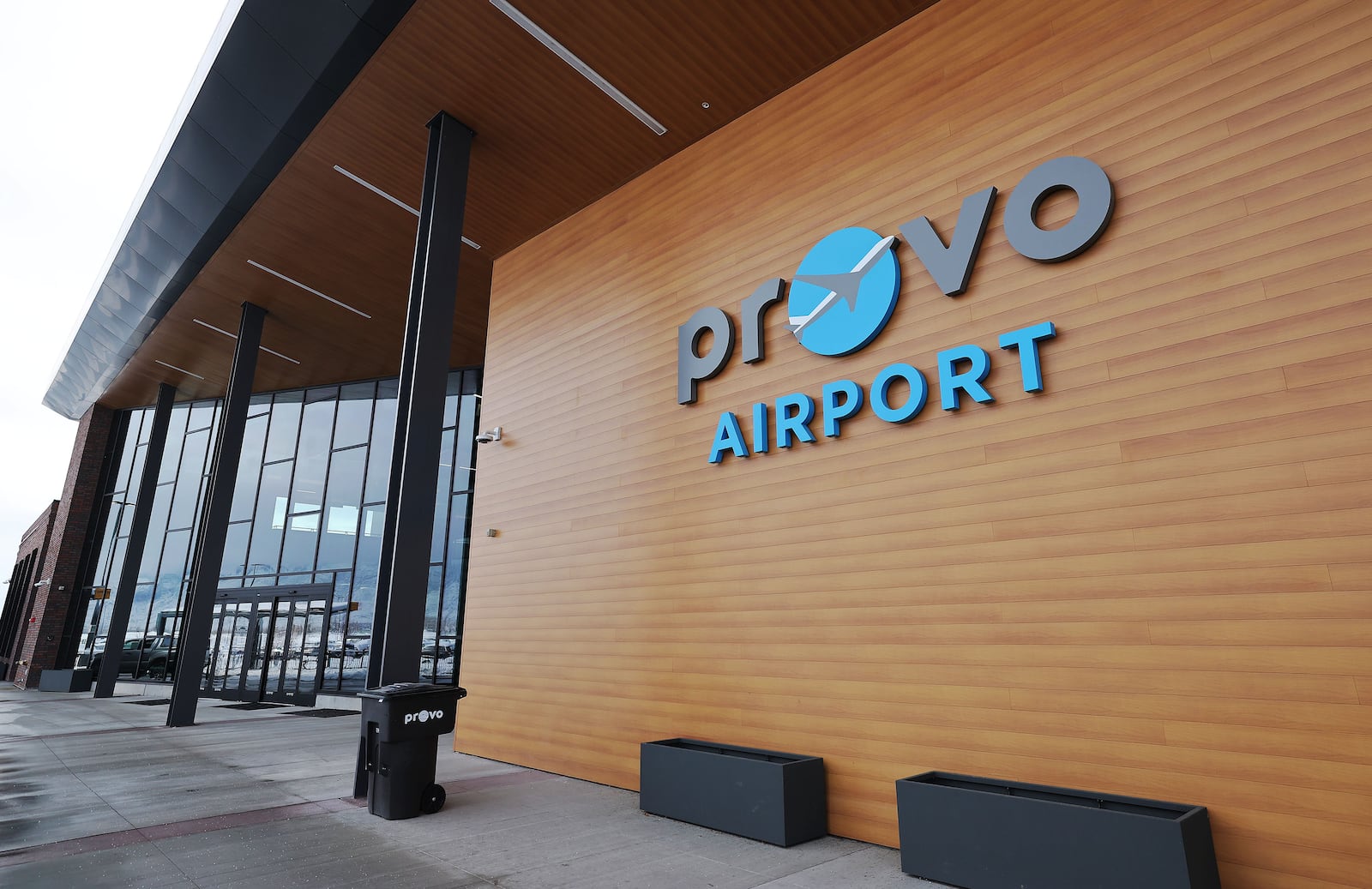This story appears in the 2024 Advisor, a publication sponsored by Colliers Utah.
As the state with the best economy in the nation, according to the U.S. News & World Report, Utah is flying high—and the expansion of the Provo Municipal Airport stands as a symbol of the state’s economic growth.
Provo Airport’s new terminal opened in July 2022, with Allegiant and Breeze Airways announcing decisions to establish their bases of operation at Provo Airport.
“Both of those carriers are low-cost carriers which don’t offer many frills,” says Provo Airport Director Brian Torgersen. “You can fly extremely affordably if you choose to.”
The affordable and accessible flight options quickly attracted travelers, and the need for expansion became evident. “We have nine commercial aircraft parked here, which immediately put us over our capacity,” Torgersen says. “The apron and the terminal we designed is designed for four aircraft.”
According to Torgersen, Provo Mayor Michelle Kaufusi proactively initiated plans for the expansion, including the potential addition of gates in the future. The terminal’s original design incorporated expansion possibilities to maintain the core infrastructure’s integrity. Her forward-thinking approach resulted in the successful acquisition of funds and subsequent airport construction.
“It’s been a cool experience to see all levels of government working together the way they should,” Torgersen says. “You see how those partnerships across levels of government are critical and work together to benefit the people.”
High altitude, high demand
The demand for additional gate space from both airlines has led to the current construction of extra apron space to facilitate up to 12 gates. The expansion will take place in both the north and south directions, introducing three to four gates on each side. The initial phase targets the south end and will introduce three passenger gates, two of which will be equipped to handle international flights.
With the aim of attracting more international flights, the Provo Airport launched the Business Air Task Force in September 2023. Torgersen originally started the task force with his air service development consultants, but it has since grown into a powerful driver for development.
The initiative involves more than 120 companies and is committed to attracting major carrier services to Provo, developing the airport into a central hub for global connectivity. As carriers with extensive networks allow travelers to depart from Provo and seamlessly connect to destinations worldwide, the airport solidifies its status as a key player in international travel and a central aviation hub.
The evolution of the Provo Airport is intertwined with the simultaneous development of the Salt Lake City International Airport, which is undergoing significant transformation with its Phase 3 expansion. This expansion is scheduled to open in fall 2024 and includes the addition of nine gates to Concourse B, along with 12 stores covering 19,260 square feet of space.
As part of the broader redevelopment program, the final phase of the Salt Lake City International Airport’s expansion will further enhance the airport’s capabilities, adding 16 additional gates to Concourse B and bringing the total number of airport gates to 94 by 2027. The comprehensive plan aims to improve the capacity and efficiency of the airport.

Jetting past congestion
The Provo Airport’s expansion may alleviate congestion at Salt Lake City International, reflecting a broader national trend of emerging secondary airports.
Secondary airports—often located near major metropolitan areas—serve as complementary alternatives to primary airports, easing traffic and offering more accessible and affordable travel options. According to a report by the American Institute of Aeronautics and Astronautics, airports like the Chicago Midway International Airport, Fort Lauderdale-Hollywood International Airport and Long Beach Airport fall into this “secondary” category.
“These airports have proven that there are viable options for increasing the capacity of regional air transportation systems,” the report continues. “As traffic is expected to grow in the upcoming years, the pressure on original and emerged core airports will become greater. … New secondary airports will be required to accommodate this growth.”
Secondary airports are also valued because of their convenience for the community. With some parking stalls located just 100 yards from the terminal, the Provo Airport provides a fast and convenient experience for travelers.
A birds-eye view
“As Utah County continues to be one of the fastest-growing markets in the nation, having an expanded municipal airport is more important than ever,” says Brandon Fugal, chairman of Colliers Utah and co-owner of Aero Dynamic Jets.
Within the growing Provo Airport, Aero Dynamic Jets’ 30,000-square-foot private hangar facility—one of the only licensed charter jet operators in the state of Utah—supports economic development and aids companies in their site selection endeavors. Flights are staged using either the Airbus H130 helicopter or Cessna private jet.
“Commercial aviation has been an important part of our expanding commercial real estate platform in Utah,” Fugal says. The use of aviation allows these companies to assess potential locations from the air, providing a unique and strategic perspective in their decision-making process and underscoring the Provo Airport’s role as a crucial asset in the region’s economic development.
“Utah has transitioned from being the crossroads of the West to the crossroads of the world, primarily attributable to the development of aviation infrastructure and resources,” Fugal says. “With Provo Municipal Airport and the Salt Lake International Airport in continuous expansion … Utah is poised to extend its hospitality globally.”

